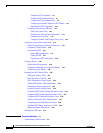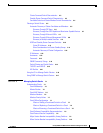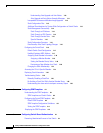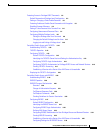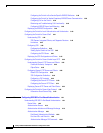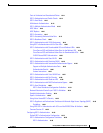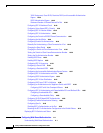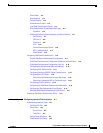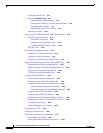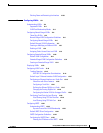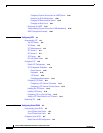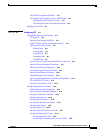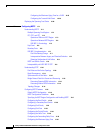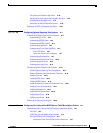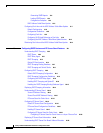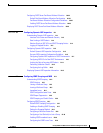
Contents
xiv
Catalyst 2960 and 2960-S Switch Software Configuration Guide
OL-8603-09
Dual-Purpose Uplink Ports 12-4
Power over Ethernet Ports 12-5
Supported Protocols and Standards 12-5
Powered-Device Detection and Initial Power Allocation 12-6
Power Management Modes 12-7
Power Monitoring and Power Policing 12-8
Connecting Interfaces 12-10
Using the Switch USB Ports (Catalyst 2960-S Switches Only) 12-11
USB Mini-Type B Console Port 12-11
Console Port Change Logs 12-11
Configuring the Console Media Type 12-12
Configuring the USB Inactivity Timeout 12-13
USB Type A Port 12-14
Using Interface Configuration Mode 12-15
Procedures for Configuring Interfaces 12-16
Configuring a Range of Interfaces 12-17
Configuring and Using Interface Range Macros 12-19
Using the Ethernet Management Port (Catalyst 2960-S Only) 12-20
Understanding the Ethernet Management Port 12-21
Supported Features on the Ethernet Management Port 12-21
Configuring the Ethernet Management Port 12-22
TFTP and the Ethernet Management Port 12-22
Configuring Ethernet Interfaces 12-23
Default Ethernet Interface Configuration 12-23
Setting the Type of a Dual-Purpose Uplink Port 12-25
Configuring Interface Speed and Duplex Mode 12-26
Speed and Duplex Configuration Guidelines 12-26
Setting the Interface Speed and Duplex Parameters 12-27
Configuring IEEE 802.3x Flow Control 12-28
Configuring Auto-MDIX on an Interface 12-29
Configuring a Power Management Mode on a PoE Port 12-30
Budgeting Power for Devices Connected to a PoE Port 12-31
Configuring Power Policing 12-33
Adding a Description for an Interface 12-34
Configuring Layer 3 SVIs 12-35
Configuring the System MTU 12-36
Monitoring and Maintaining the Interfaces 12-37
Monitoring Interface Status 12-38
Clearing and Resetting Interfaces and Counters 12-38



